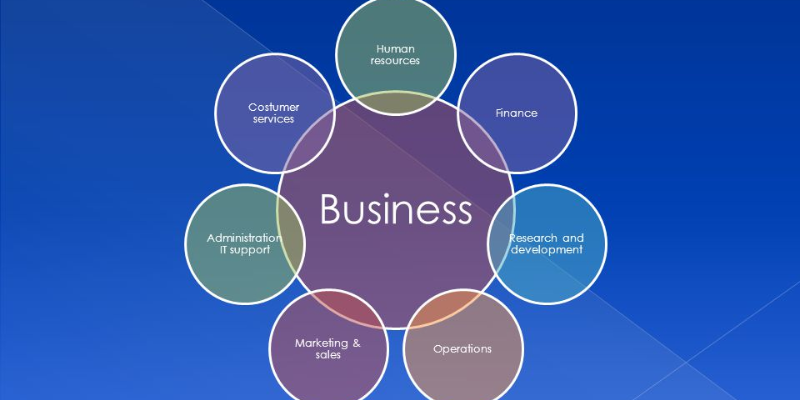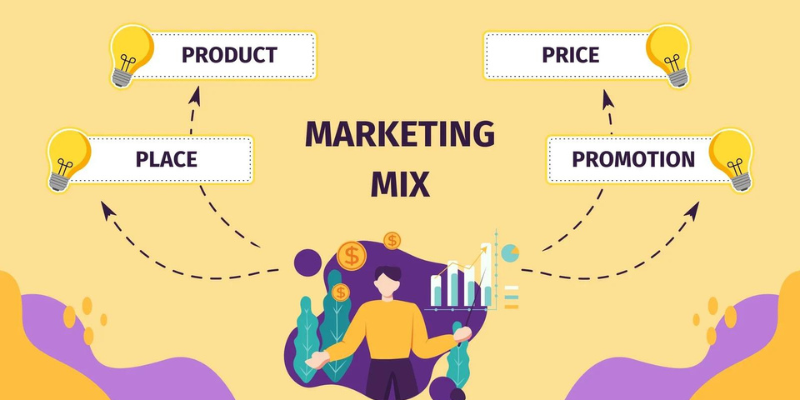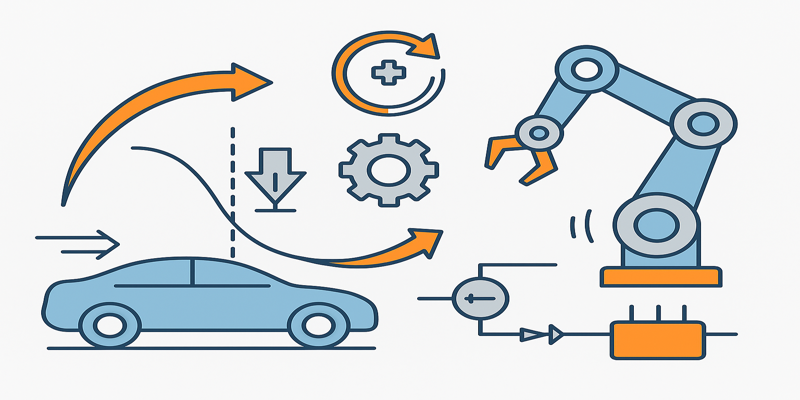In today’s fast-paced and ever-evolving professional landscape, staying relevant and competent requires more than just initial education and training. Continuous Professional Development (CPD) represents an essential aspect of professional life, where individuals take a proactive approach to their personal and career growth through lifelong learning. CPD is a deliberate, ongoing, and self-driven process aimed at maintaining and enhancing one’s professional knowledge, skills, and competencies. Professionals across various industries benefit from CPD as it enables them to stay up-to-date with industry trends, adapt to changes, and remain competitive in the job market. This article examines deeper into the significance of CPD, its key components, and how it fosters a proactive approach to career management.
1.0 Lifelong Learning: A Core Component of CPD
At the heart of Continuous Professional Development lies the principle of lifelong learning. Gone are the days when formal education was seen as the sole foundation for a successful career. Modern careers are dynamic, and the knowledge and skills acquired at the beginning of one’s career may become obsolete as time progresses. Lifelong learning is a critical aspect of CPD that encourages professionals to continuously seek out new knowledge and educational opportunities beyond their initial qualifications (Daley et al., 2010). Whether through attending workshops, enrolling in online courses, participating in conferences, or pursuing further formal education, CPD facilitates ongoing learning to remain relevant in a rapidly changing professional world.
In some sectors, particularly technology, health care, and law, the pace of change is particularly rapid. Innovations and new regulations emerge regularly, necessitating continuous updates in knowledge. Professionals who embrace lifelong learning and CPD position themselves to meet the demands of these changes effectively. Moreover, organisations increasingly value employees who show a commitment to CPD, as it indicates adaptability and a desire for self-improvement.
2.0 Skill Enhancement: Developing Professional Competence
CPD is not solely about gaining new knowledge—it also involves enhancing existing skills and developing new competencies. This focus on skill enhancement is crucial to ensure professionals maintain their expertise and continue to deliver high-quality services within their respective fields (Kidd & Hounsell, 2007). CPD offers opportunities to refine both technical and soft skills. For instance, a software developer may need to stay updated on the latest programming languages, while a manager may benefit from leadership and communication training.
Moreover, the landscape of required skills has evolved significantly in recent years. The rise of digital technologies and artificial intelligence has placed greater emphasis on digital literacy and problem-solving skills. CPD allows professionals to stay ahead of these trends and improve their employability in an increasingly competitive global job market. Beyond technical competencies, the development of interpersonal and leadership skills is essential for career progression, and CPD provides a platform to hone these crucial abilities.
3.0 Reflective Practice: A Path to Self-Awareness and Growth
Reflective practice is a critical element of CPD that allows professionals to assess their work, identify areas for improvement, and set goals for future development. The concept, popularised by Donald Schön (1983), involves regular self-reflection and evaluation of one’s performance, helping professionals remain self-aware and engaged in their development. By reflecting on past experiences, professionals can identify gaps in their knowledge or skills and make informed decisions about which areas to focus on through CPD activities.
This reflective process not only enhances individual performance but also contributes to better service delivery and improved outcomes for clients and organisations. For example, a healthcare professional might reflect on patient care situations to determine what worked well and what could be improved, guiding their future training in specialised areas. Reflective practice encourages a growth mindset, which is crucial for long-term career success.
4.0 Staying Updated on Industry Trends: Ensuring Relevance
In an age of rapid technological advancement and evolving industry standards, staying informed about current trends and developments is critical for any professional. CPD offers professionals the opportunity to keep abreast of the latest trends, technologies, and best practices, ensuring they remain relevant in their field (Lave & Wenger, 1991). Whether it’s through industry conferences, online seminars, or reading industry publications, CPD enables professionals to integrate new insights into their work, which ultimately benefits both themselves and their organisations.
For example, professionals in the financial industry must stay updated on changes in regulatory frameworks and financial technologies to remain compliant and competitive. Similarly, educators need to be aware of emerging teaching methodologies and technological tools to enhance student learning. Through CPD, professionals not only keep their knowledge current but also anticipate and prepare for future changes, making them more adaptable and resilient in the face of industry disruptions.
5.0 Networking and Collaboration: Building Connections for Success
Another valuable aspect of CPD is the opportunity for networking and collaboration with peers, mentors, and industry experts. CPD activities often involve attending workshops, seminars, and conferences where professionals can exchange ideas, share experiences, and collaborate on solutions to common challenges (Brown & Duguid, 2000). These interactions foster professional relationships that can lead to career opportunities, mentorship, and collaborative projects.
In many industries, collaboration is a key driver of innovation and problem-solving. CPD provides the ideal platform for building and nurturing these relationships, which can contribute to both personal and professional growth. The value of networking cannot be understated, as it allows professionals to tap into a broader knowledge base, gain fresh perspectives, and enhance their career prospects through mutual support and guidance.
6.0 Regulatory Compliance: Meeting Industry Standards
For some professionals, engaging in CPD is not just a matter of personal development—it is a regulatory requirement. Many industries, such as healthcare, law, and finance, have strict CPD obligations that professionals must meet to maintain their licences and certifications (Mclachlan, 2006). These regulations ensure that professionals continue to meet industry standards and deliver services that are safe, ethical, and aligned with current best practices.
Failure to meet CPD requirements can result in the suspension or revocation of professional accreditation, which could severely impact an individual’s career. As such, CPD plays a crucial role in helping professionals stay compliant with regulations and maintain their professional standing. In this way, CPD serves as both a proactive career management tool and a safeguard against professional risks.
7.0 Career Advancement: Unlocking New Opportunities
Professionals who actively engage in CPD are better positioned for career advancement. By continuously developing new skills and expanding their knowledge, individuals can increase their competitiveness in the job market and open doors to new career opportunities (Tynjälä, 2013). Employers often view a commitment to CPD as a sign of motivation, dedication, and a willingness to invest in personal growth.
Moreover, CPD can lead to greater job satisfaction as professionals who invest in their development are more likely to achieve their career goals and feel fulfilled in their work. Whether through promotions, salary increases, or the ability to take on more complex roles, CPD serves as a catalyst for professional progression and career success.
8.0 Adaptability: Thriving in an Evolving Workplace
In an era of constant change, adaptability is a crucial trait for success. CPD fosters adaptability by encouraging professionals to embrace change, learn new technologies, and adjust to evolving workplace dynamics (Billett, 2001). Professionals who continuously develop their skills and knowledge are more likely to thrive in an environment where new challenges and opportunities arise regularly.
Adaptability also enhances resilience in the face of uncertainties, such as economic downturns or technological disruptions. Through CPD, professionals cultivate a mindset that values learning and flexibility, equipping them to navigate changes and seize new opportunities with confidence.
Continuous Professional Development (CPD) is a proactive approach to career management that empowers professionals to remain competent, adaptable, and competitive in an ever-changing job market. Through lifelong learning, skill enhancement, reflective practice, and staying updated on industry trends, professionals can ensure they continue to add value to their organisations and clients. CPD fosters collaboration, supports regulatory compliance, and unlocks new career opportunities, all while cultivating adaptability in a dynamic professional landscape. Ultimately, CPD is essential for ensuring long-term career success and professional fulfilment.
Note: Professional Development, Continuous Professional Development (CPD), Lifelong Learning, and Upskilling all refer to the ongoing process of enhancing one’s skills, knowledge, and abilities throughout their career. These phrases are used synonymously.
References:
Billett, S. (2001) Learning in The Workplace: Strategies for Effective Practice. Allen & Unwin.
Brown, J. S., & Duguid, P. (2000) The Social Life of Information. Harvard Business Press.
Daley, B. J., Durning, S. J., Torre, D., & Pangaro, L. N. (2010) “The Power of Peer Assessment in Medical Education”. Academic Medicine. 85(11), pp. 1746-1751.
Hager, P., & Holland, S. (2006) Graduate Attributes, Learning and Employability. Springer.
Kidd, J. M., & Hounsell, D. (2007) “Enhancing the Effectiveness of Learning and Teaching in Design & Technology Through a Focus on Professional Skills Development”. International Journal of Technology and Design Education. 17(1), pp. 51-65.
Lave, J., & Wenger, E. (1991) Situated Learning: Legitimate Peripheral Participation. Cambridge University Press.
McLachlan, J. C. (2006) “Articulate: Promoting Reflection to Support Professional Practice”. In Promoting Legal & Ethical Awareness: A Primer for Health Professionals and Patients. pp. 82-94.
Schön, D. A. (1983) The Reflective Practitioner: How Professionals Think in Action. Basic Books.
Tynjälä, P. (2013) “Toward A 3-P Model of Workplace Learning: A Literature Review”. Vocations and Learning. 6(1), pp. 11-36.













